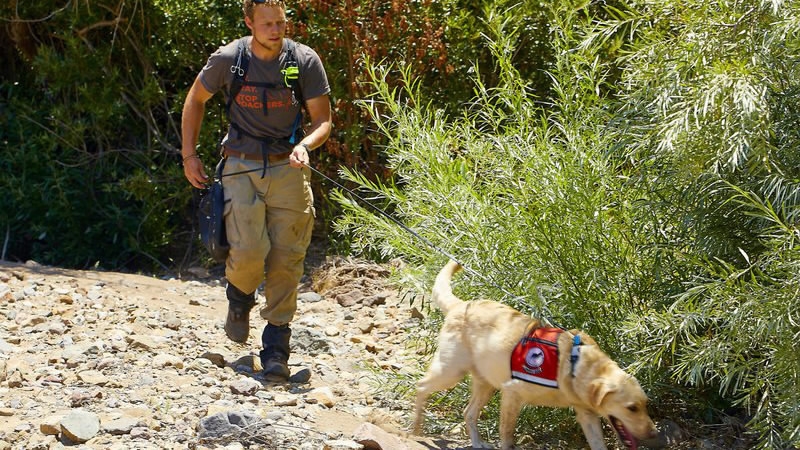
Tech & Sci
11:07, 06-Sep-2017
Dog helps sniff out invasive ants on California island

Scientists assessing long-term efforts to eradicate invasive ants on the Channel Islands off the Southern California coast have enlisted a four-legged expert to make sure a project to kill off the destructive pests has succeeded.
A yellow Labrador named Tobias has lived for three months with a handler on Santa Cruz Island. The specially trained dog keeps its snout to the ground, rooting through more than 1.6 square miles (4.1 square kilometers) of underbrush, searching for nests of Argentine ants that have threatened the ecosystem after they were introduced decades ago.
Christina Boser, an ecologist with the Nature Conservancy group, said Tuesday that Tobias has not yet discovered any new ant populations – a sign that a project started in 2009 to wipe out the unwanted insects has probably worked.
“The ants are very hard to find,” said Boser, adding that researchers decided to try a detection dog after first using lures made with a synthetic ant pheromone. “He’s good at his job, and he enjoys it a lot.”

Ky Zimmerman and his Labrador Tobias search for nests of Argentine ants on Santa Cruz Island off the coast of Southern California, August 10, 2017. The dog is wearing a mask as protection from foxtails, a grass seed that can get into his eyes, nose or mouth. /AP Photo
Ky Zimmerman and his Labrador Tobias search for nests of Argentine ants on Santa Cruz Island off the coast of Southern California, August 10, 2017. The dog is wearing a mask as protection from foxtails, a grass seed that can get into his eyes, nose or mouth. /AP Photo
Researchers speculate the ants arrived in the Channel Islands more than 30 years ago when boats used by contractors did work there.
Boser researchers have not destroyed several old nests to make sure Tobias has something to sniff out so he can get his work reward: A favorite ball.
Argentine ants found in the country and in other South American nations have crossed borders and bedeviled homeowners and farmers along the US West Coast for decades.
In a protected environment like Santa Cruz Island, part of Channel Islands National Park, the tiny pests aggressively compete with local ants for nectar, Boser said. Ultimately they can prevent bees from pollinating flowers – stopping seed production and killing off plant species, she said.
Starting seven years ago, teams began using helicopters to distribute beads containing a low dose of pesticide mixed with sugar water across infested areas of the islands northwest of Los Angeles. Seduced by the sweetness, foraging worker ants gobbled up the bait and headed back to their nests, where they poisoned ant queens. Without queens, the colonies eventually died off.

Ky Zimmerman and his Labrador Tobias search for nests of Argentine ants on Santa Cruz Island off the coast of Southern California, June 21, 2017. /AP Photo
Ky Zimmerman and his Labrador Tobias search for nests of Argentine ants on Santa Cruz Island off the coast of Southern California, June 21, 2017. /AP Photo
“We’re now at the point that we’re going back in there to see if it worked,” Boser said.
The fact that Tobias’ searches are coming up empty gives scientists hope, she said, but it will take further study of long-term data for them to declare the ants “functionally eradicated.”
Tobias, owned by the Working Dogs For Conservation group, previously sniffed out invasive quagga mussels at a lake in Montana.
When the stint on Santa Cruz Island ends, the dog will eventually be dispatched for the same ant-sniffing job on San Clemente Island, the southernmost link in the Channel Islands chain.
“We’re happy to keep him working, and he’s happy to do it,” Boser said.
9985km
Source(s): AP

SITEMAP
Copyright © 2018 CGTN. Beijing ICP prepared NO.16065310-3
Copyright © 2018 CGTN. Beijing ICP prepared NO.16065310-3